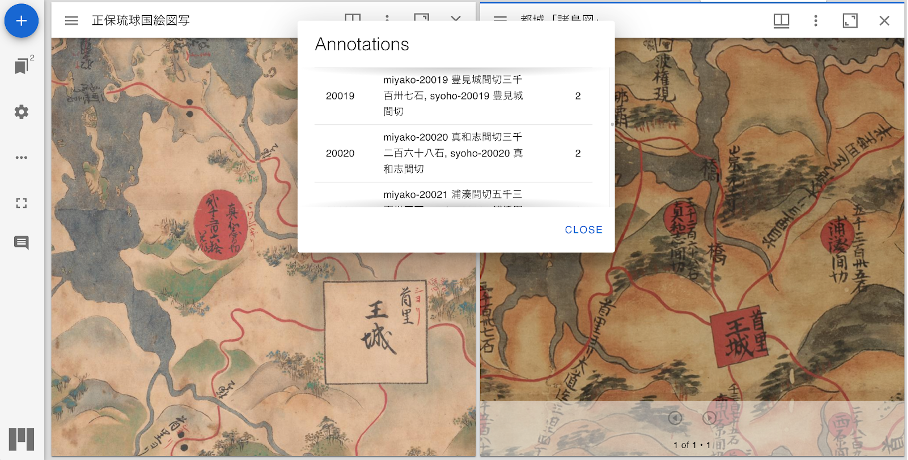3. Developed Tool
3.1. Side-by-Side Display of Modern Maps and Historical Maps
Figure 1 shows a screen example of the viewer developed for this annotation data, which is created with Allmaps. It provides a modern map, diagram, a list of place names, and a search function. By clicking on a marker on the modern map or an annotation on the diagram, the corresponding location on the other is focused. This functionality and viewer allow the user to check the correspondence between the diagram and the modern map without distorting the diagram.

Figure 1: Side-by-Side Display of Modern Map and Historical Map
3.2. Support for Comparing Multiple Historical Maps
It is assumed that the place names within each map image being compared are annotated. Furthermore, each place name is assigned an ID, and it is assumed that the relationships between corresponding place names in different maps can be retrieved through IDs or similar means. For such data, the annotation description defined in the IIIF Presentation API has been partially extended. A field named 'cid' (common ID) was added to propose a description method that assigns a common ID to corresponding place names. Additionally, a viewer has been developed that can load manifest files with this description, search for annotations with corresponding IDs in multiple historical maps, and focus on the corresponding annotations.
Figure 2 illustrates an example where a list of place names is displayed at the center of the screen, with corresponding place names in the left and right historical maps being automatically focused.

Figure 2: Mirador Plugin for Comparing Multiple Historical Maps